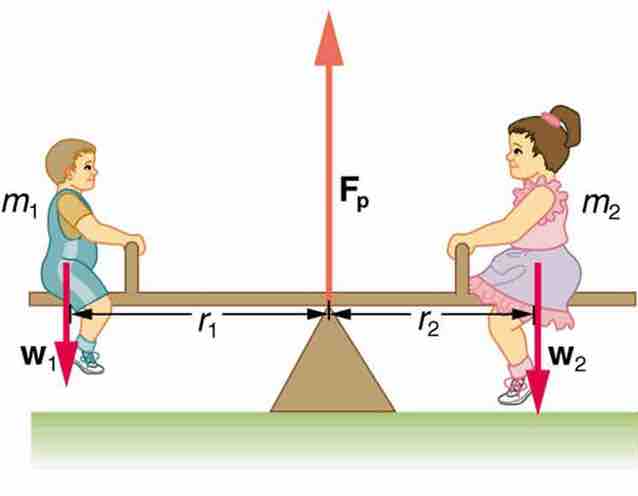A child's seesaw, shown in , is an example of static equilibrium. An object in static equilibrium is one that has no acceleration in any direction. While there might be motion, such motion is constant.

Two children on a seesaw
The system is in static equilibrium, showing no acceleration in any direction.
If a given object is in static equilibrium, both the net force and the net torque on the object must be zero. Let's break this down:
Net Force Must Be Zero
The net force acting on the object must be zero. Therefore all forces balance in each direction. For example, a car moving along a highway at a constant speed is in equilibrium, as it is not accelerating in any forward or vertical direction. Mathematically, this is stated as Fnet = ma = 0.
Net Torque Must Be Zero
The second condition necessary to achieve equilibrium involves avoiding accelerated rotation (maintaining a constant angular velocity). A rotating body or system can be in equilibrium if its rate of rotation is constant and remains unchanged by the forces acting on it.
To understand what factors affect rotation, let us think about what happens when you open an ordinary door by rotating it on its hinges.The magnitude, direction, and point of application of the force are incorporated into the definition of the physical quantity called torque—the rotational equivalent of a force. It is a measure of the effectiveness of a force in changing or accelerating a rotation (changing the angular velocity over a period of time).
In equation form, the magnitude of torque is defined to be τ=rFsinθ where τ (the Greek letter tau) is the symbol for torque, r is the distance from the pivot point to the point where the force is applied, F is the magnitude of the force, and θ is the angle between the force and the vector directed from the point of application to the pivot point.